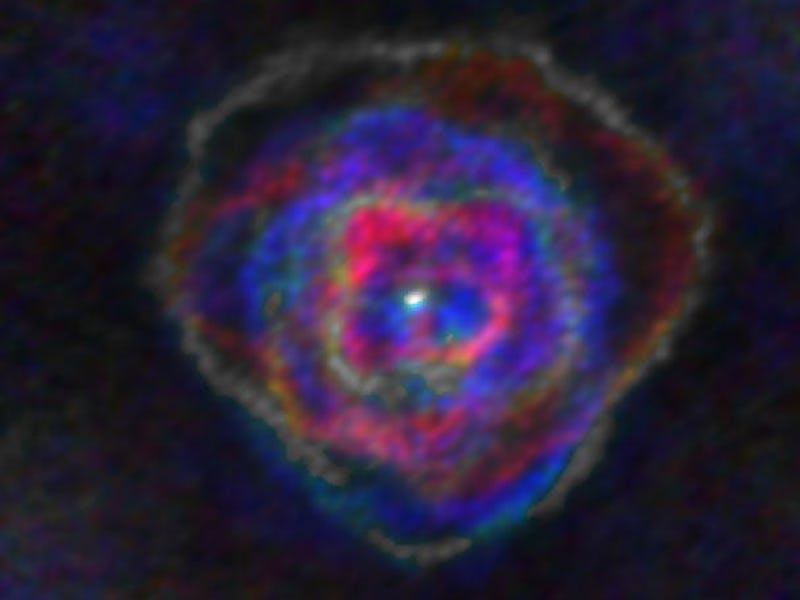Astronomers discover how planetary nebulae form mesmerizing shapes
The study sheds light on what the Sun will look like when it dies.

When a star runs out of fuel, it sheds its outer layers of gas and, if it doesn't explode in a supernova, forms a glowing shell of ionized gas that expands into space.
Shells like these are known as planetary nebulae, and they make for some of the most colorful, mesmerizing images we see of the cosmos. As beautiful as they are, planetary nebulae are also longstanding astronomical mysteries. Until recently, scientists did not know the reason behind their odd shapes.
However, a team of astronomers may have just solved this artful mystery after extensively observing the stellar winds that form around aging stars.
Their findings are detailed in a study published Thursday in the journal Science and give scientists a unique look at what the shape of our Sun might become.
Scientists captured stellar winds around drying stars, revealing a variety of morphologies, including disks, cones, and spirals. The blue color represents material moving towards you while red is material that is moving away from you. you.
A colorful look into the Sun's future — The Sun will run out of fuel in about 5 billion years, becoming a red giant star, or a bright star of low mass that is near the end of its life.
The dying star will eventually form a planetary nebula around it, heating up while its radiation causes the expanding ejected layers of material to glow. The planetary nebulae produced by stars are almost never round, instead, producing a variety of colorful shapes.
"The Sun - which will ultimately become a red giant - is as round as a billiard ball, so we wondered: How can such a star produce all these different shapes?" lead author Leen Decin, a researcher at the KU Leuven Institute of Astronomy, explains.
Using the ALMA Observatory in Chile, Decin and her team examined the stellar winds that carry particles ejected aging stars. The team gathered the most detailed collection of observations of these stellar winds yet, each of them made using the exact same method in order to be able to directly compare them.
The team had assumed that these winds would be spherical in shape. However, the findings did not match their prediction: Some of the stellar winds were shaped like discs, others had spirals or cones.
"We noticed these winds are anything but symmetrical or round," Decin said. "Some of them are actually quite similar in shape to planetary nebulae."
How did the winds get this odd variety of shapes? — The study suggests that the winds were shaped by other, low-mass stars or heavy planets that happened to be in the vicinity of the dying star.
"All our observations can be explained by the fact that the stars have a companion," Decin said. "Just like how a spoon that you stir in a cup of coffee with some milk can create a spiral pattern, the companion sucks material towards it as it revolves around the star and shapes the stellar wind."
As our Sun ages, its shape will be determined by the companions in its surroundings.
"Jupiter or even Saturn — because they have such a big mass — are going to influence whether the Sun spends its last millennia at the heart of a spiral, a butterfly, or any of the other entrancing shapes we see in planetary nebulae today," Decin said.
Abstract: Binary interactions dominate the evolution of massive stars, but their role is less clear for low- and intermediate-mass stars. The evolution of a spherical wind from an asymptotic giant branch (AGB) star into a non-spherical planetary nebula (PN) could be due to binary interactions. We observed a sample of AGB stars with the Atacama Large Millimeter/submillimeter Array (ALMA) and found that their winds exhibit distinct non-spherical geometries with morphological similarities to planetary nebulae (PNe). We infer that the same physics shapes both AGB winds and PNe; additionally, the morphology and AGB mass-loss rate are correlated. These characteristics can be explained by binary interaction. We propose an evolutionary scenario for AGB morphologies that is consistent with observed phenomena in AGB stars and PNe.